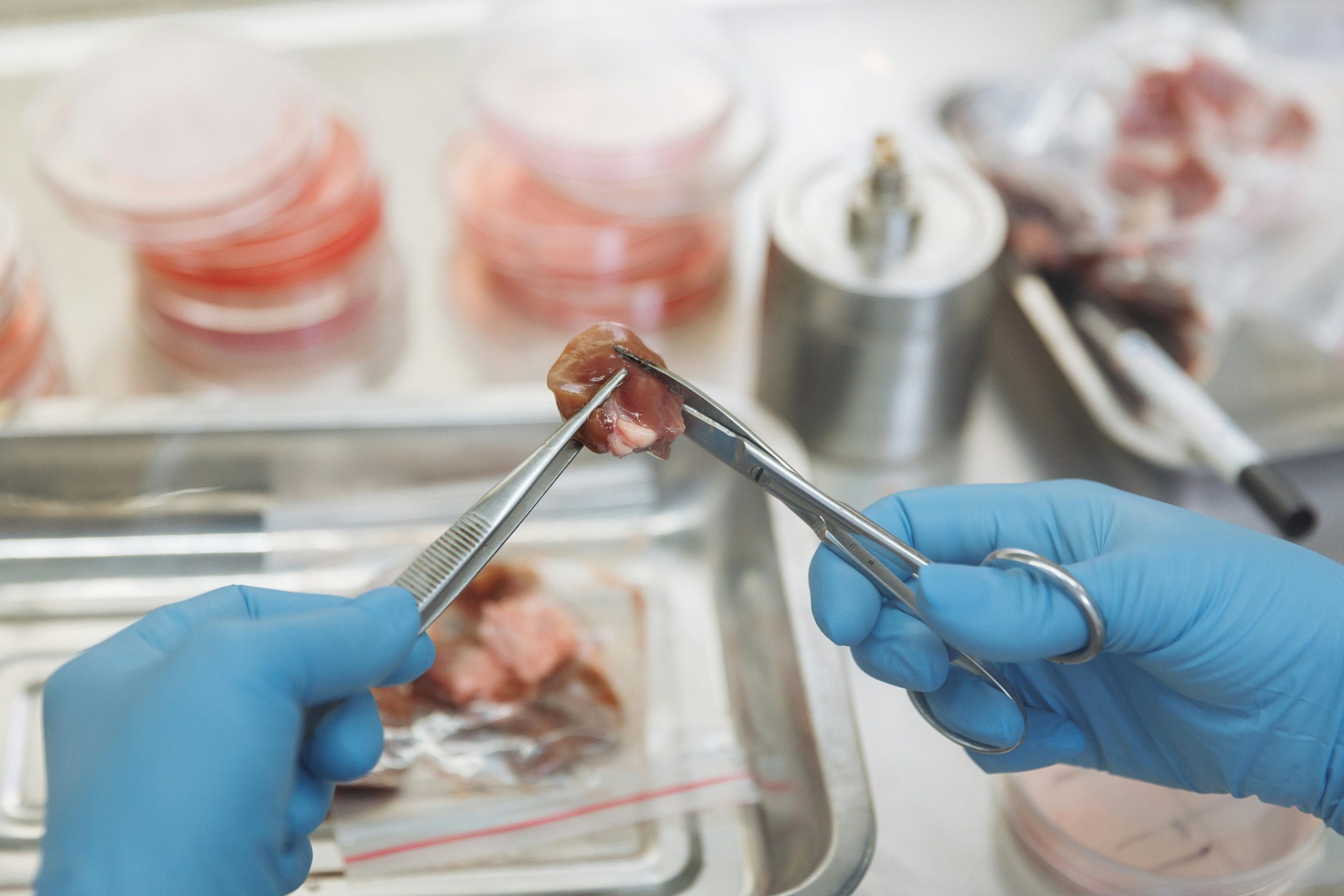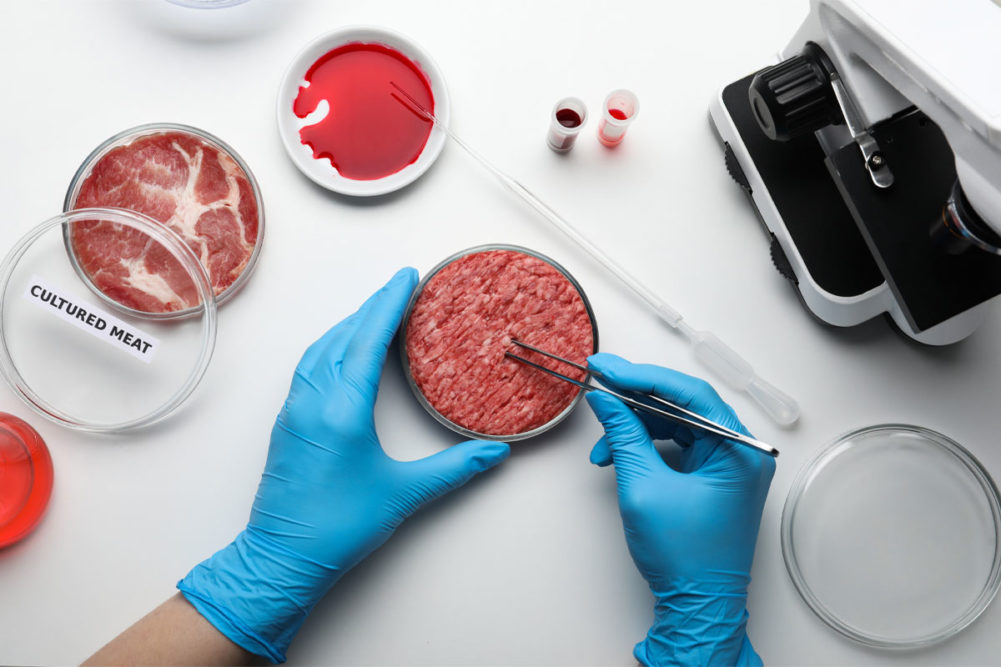Cultivated Meat Scaling Up: A Game-Changer for the Industry
The cultivated meat industry has long held promise for revolutionizing the food sector, offering a sustainable and ethical alternative to traditional animal farming. However, one of the significant challenges has been scaling up production to a level that would make cultivated meat economically viable for mass consumption. Recent advancements, though, have turned the tide, particularly in the production of cultivated chicken meat, bringing its price down to match that of organic meat.
A New Breakthrough in Cultivating Animal Cells
The key to this advancement lies in a novel technique for cultivating animal cells, which allows for their sustained growth over time. Unlike the traditional methods, which require intensive resources and contribute to high costs, this new approach enhances efficiency. Large bioreactors—typically around 15,000 liters in capacity—are commonly used for cell cultivation. However, the rapid build-up of waste by-products within these bioreactors has long been a barrier to achieving high-density cell growth, limiting production capacity.
In the study published in Nature Food, the scientists investigated a technique known as perfusion. This technique involves a steady stream of fluid passing through a membrane amidst the growth of cells. This process ensures that the cells receive a continual supply of essential nutrients for their survival, while simultaneously allowing waste products to be efficiently removed and processed within the system. This method supports the sustenance and health of the cells by mimicking a natural environment.

This innovative method solves that issue by offering a more streamlined and cost-effective process, enabling mass production of cultured meat at prices comparable to organic meat. As a result, the cultivated meat industry is poised for significant growth, thanks to this reduction in production costs.
The Future of Cultivated Meat Production
With these recent advancements, the future of cultivated meat looks more promising than ever. The ability to scale up production without compromising efficiency or quality brings the industry closer to providing consumers with a sustainable, ethical, and affordable alternative to traditional meat.
As the technology continues to evolve, we can expect cultured meat to become more widely available, driving further price reductions and offering a realistic solution to the environmental and ethical concerns associated with conventional meat production.
Economic and Environmental Impact
The breakthrough in scaling up cultivated meat production not only holds promise for reducing costs but also addresses some of the most pressing environmental issues tied to traditional meat farming. Industrial agriculture is a major contributor to greenhouse gas emissions, deforestation, and water usage. The shift to lab-grown meat could significantly reduce these environmental impacts, offering a more sustainable solution for meeting global meat demand.
With the new cultivation methods, cultivated meat can be produced using fewer natural resources, such as land and water, and without the need for antibiotics or hormones, which are common in conventional farming. This presents a compelling case for alternative protein sources as a viable solution to feeding a growing global population while reducing the ecological footprint of food production.
Market Growth and Consumer Acceptance
As prices for cultivated meat drop and production becomes more efficient, consumer acceptance is expected to rise. Early adopters of plant-based and alternative proteins are already setting the stage for broader market penetration of cultivated meat. The fact that prices are now comparable to organic meat will likely attract more consumers looking for ethical, environmentally friendly, and health-conscious options.

According to industry experts, we can expect to see a wider variety of cultivated meat products hitting the market, ranging from beef and chicken to more niche offerings like seafood. This diversity, combined with increasing investment in alternative proteins, signals a bright future for the cultured meat industry as it continues to disrupt traditional meat production.
A New Era in Food Production
The scaling up of cultivated meat represents a pivotal moment for the future of food. With continued technological advancements, growing consumer interest, and declining costs, cultivated meat is set to play a major role in transforming global food systems. As more companies embrace this technology and improve production methods, the dream of affordable, ethical, and sustainable meat may soon become a reality for consumers worldwide.
Cultivated Meat: A Competitive Edge for Sustainability
As the cultivated meat industry gains momentum, its impact on sustainable food production cannot be overstated. By bypassing the need for animal farming, the industry drastically cuts down on the resources required for meat production. According to recent studies, lab-grown meat could reduce land use by up to 99% and water consumption by up to 90%. Moreover, it has the potential to slash greenhouse gas emissions by 78-96% compared to traditional livestock farming. These environmental benefits make cultivated meat a game-changer in the fight against climate change.
The technology is also gaining support from environmental groups, who view it as a sustainable alternative that aligns with the global push toward more responsible consumption. As consumers become more conscious of their ecological footprint, cultivated meat offers a solution that meets the growing demand for protein without depleting natural resources.
Investment and Innovation Fueling the Market
The cultivated meat market is drawing significant attention from investors and companies seeking to capitalize on the future of food. Venture capital firms and food tech companies are funneling billions of dollars into research, development, and scaling of lab-grown meat production. This influx of funding is helping companies accelerate innovation, making the once costly and experimental technology more accessible to the masses.

One of the driving forces behind this investment boom is the potential for disruption in the global food supply chain. Cultivated meat represents a sustainable, scalable solution that can alleviate food insecurity, particularly as the global population is expected to reach nearly 10 billion by 2050. The ability to produce protein-rich food without the limitations of agricultural land or unpredictable weather conditions offers a reliable food source for future generations.
Looking Ahead: The Future of Cultivated Meat
As cultivated meat technology continues to advance, experts predict that its market share will grow significantly within the next decade. Supermarkets and restaurants will begin offering a wider range of lab-grown meat products, catering to both meat-eaters and vegetarians alike. Governments are also beginning to recognize the potential of alternative proteins, with some offering funding and regulatory support to ensure their development.
In the coming years, as costs continue to decline and production becomes even more efficient, cultivated meat could become a mainstream food option. This shift will not only redefine how we produce and consume meat but also pave the way for a more sustainable and ethical global food system. The potential for cultivated meat to reduce environmental impact, improve food security, and offer consumers healthier, more ethical choices makes it a central force in shaping the future of food.











